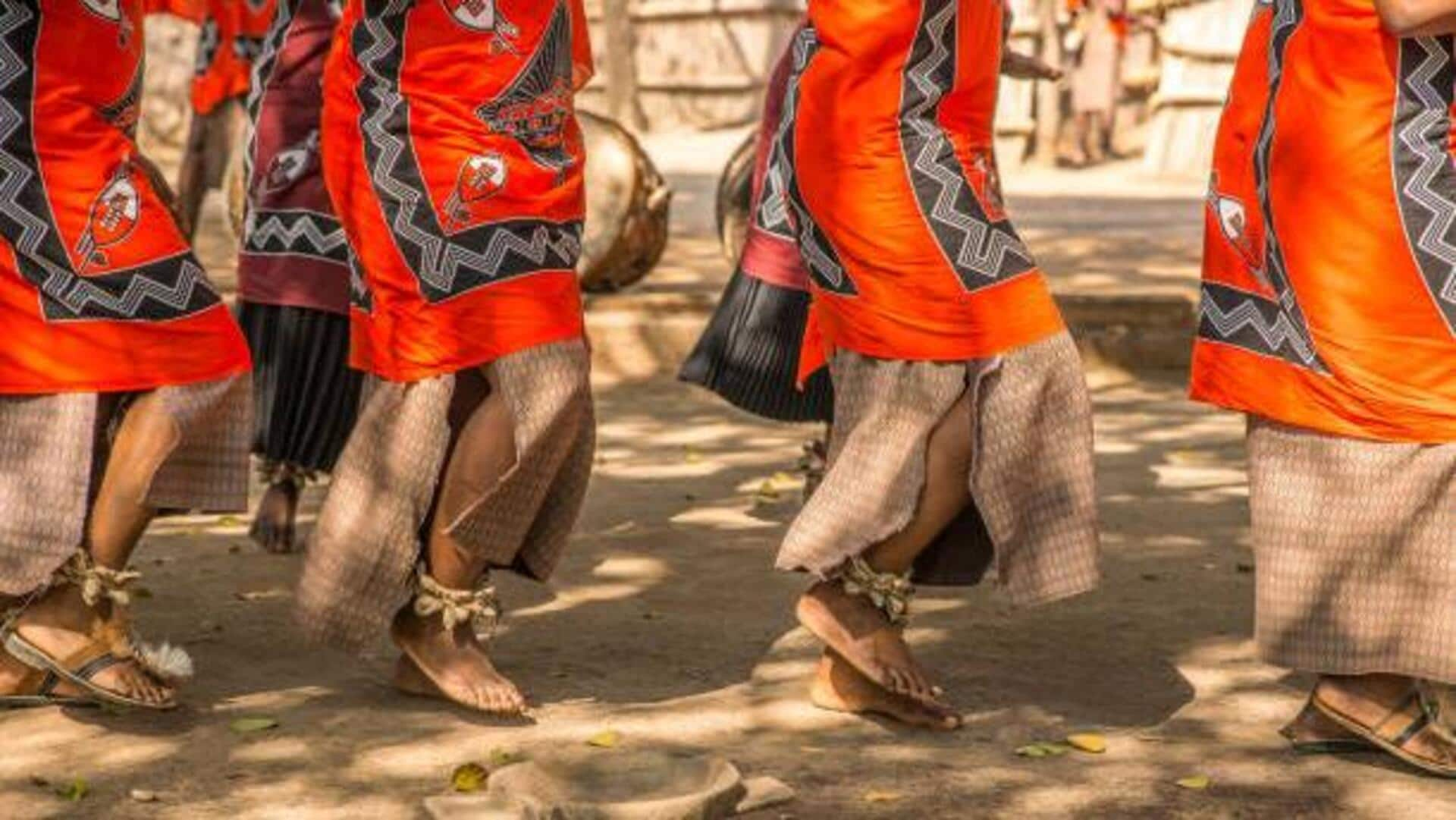
5 endangered dance forms to know about
What's the story
African dance forms are a vital part of the continent's cultural heritage, reflecting the diverse traditions and histories of its people. However, many of these traditional dances are endangered due to modernization and globalization. Efforts to preserve these dance forms are crucial for maintaining cultural identity and passing down traditions to future generations. This article explores five endangered African dance forms that play a significant role in preserving cultural heritage.
#1
The intricate Adumu dance
The Maasai people of Kenya and Tanzania perform the Adumu dance. Famous for its distinctive jumping style, this dance is usually performed at coming-of-age ceremonies. The dancers stand in a circle, jumping as high as they can, taking turns, while standing straight. The Adumu is not just a show of strength but also a symbol of community strength and unity among the Maasai.
#2
The rhythmic Umteyo dance
The Umteyo dance comes from the South African Xhosa people. It consists of rhythmic body movements with a focus on shoulder shaking and hip swaying. Traditionally performed at celebrations like weddings or harvest festivals, this dance acts as an expression of joy and togetherness. Despite its cultural importance, urbanization has resulted in fewer younger generations practicing it.
#3
The energetic Ingoma dance
Ingoma is a traditional Zulu war dance from South Africa involving vigorous stomping movements, singing, and drumming. It was used in the past to prepare warriors for battle or celebrate their victories. Today, it stands as an important cultural performance at festivals and ceremonies. Preservation efforts include teaching Ingoma in schools so that young Zulu people carry forward this vibrant tradition.
#4
The graceful Ewe Agbadza dance
Agbadza is a traditional Ewe dance from Ghana that features graceful hand gestures, intricate footwork patterns, and lively drum rhythms. It was originally performed during funerals or social gatherings like festivals or weddings, but today it is still popular across the events celebrating Ewe culture, despite facing challenges from modern influences on youth's preferences towards contemporary music styles over traditional ones.
#5
Reviving the Mbende Jerusarema dance
Mbende Jerusarema comes from Zimbabwe's Shona community. It was once banned under colonial rule for being too indecent. That's because dancers perform close together and execute fast-paced steps. They are accompanied by clapping hands and drums. The drums play complex rhythms creating captivating performances full of energy and excitement. These have been revived post-independence through dedicated efforts.